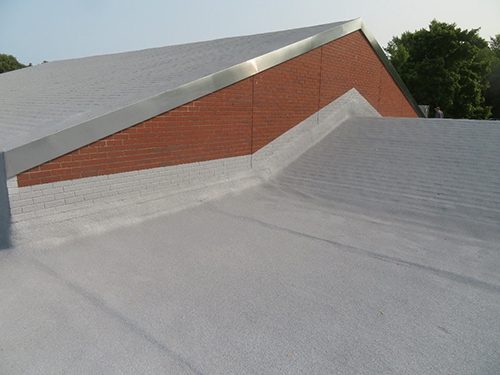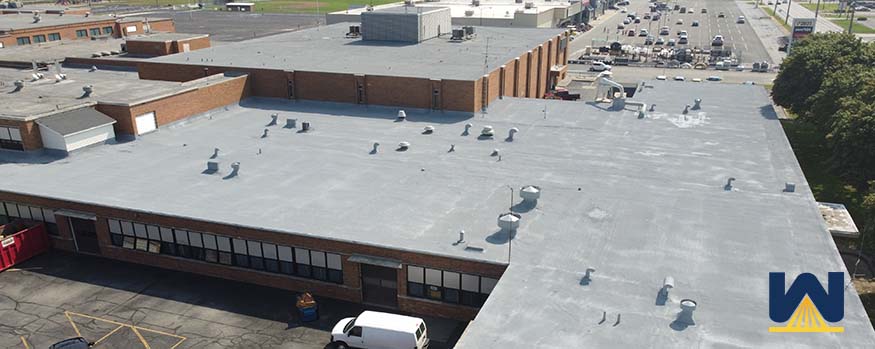Quick answer: You might want to look at seamless roofing systems such as spray polyurethane foam or roof coating systems. These roof systems are fluid-applied and will cover any microscopic water entry points on your roof.
So, you have a large commercial roof that’s leaking. You see where the leak is coming through the building or leaving brown spots on the ceiling, but when you get on the roof, nothing sticks out as a water entry point.
What should you do?
Your first step is to contact a commercial roofing contractor who does infrared inspections.
Infrared inspections will locate areas of the roof’s insulation (that’s under the top layer) that are holding water.
An HVAC unit may look watertight to the naked eye, but perhaps the infrared inspection determines that a 5 ft perimeter around the unit is showing saturated water.
What if you have multiple leaks that are hard to find?

If you perform an infrared inspection and it’s determined that there’s a large number of areas that are leaking, but it’s hard to pinpoint the exact location where water is entering the building, one solution is a spray polyurethane foam roof.
For example, say there’s water coming in around the same HVAC unit with a 5 ft. perimeter of water. Is water entering around the flashing, on the north or south side of the unit, in one microscopic hole or multiple, etc.?
Spray foam solves this issue because it’s sprayed as a liquid that expands 30x its size.
Here’s a video of spray foam being installed on a commercial roof:
Spray foam will create a seamless, self-adhering roofing system that will fully encapsulate all water entry opportunities.
The average thickness of a spray foam roof is 1.5 inches.
If you have lots of hard-to-locate water entry points, spray foam will fill the area and create a 1.5” thick barrier.
Other questions building owners have about spray foam roofing:
- How much do spray foam roofs cost?
- What problems can spray foam roofs have?
- How long will a spray foam roof last?
What if you have difficulty finding roof leaks on a newer roof

Maybe you have a roof that’s in decent condition, but still has some leaks that are hard to find.
In this case, a silicone roof coating system may be your best repair option.
The easiest way to explain a roof coating system is that it’s similar to rolling (or spraying) very thick paint onto your roof.
NOTE: Simple paint does not work on a commercial roof. Roof coatings are waterproof, elastomeric (expand and contract with the roof), have high elongation and tensile strength. The paint reference was only meant to describe what the material looks like.
A complete roof coating installation includes:
- Infrared inspection/core samples to identify wet areas of insulation
- Wet insulation is removed and replaced with similar dry material
- Existing roof is cleaned
- Adhesion tests are performed
- Seams are strengthened with mesh and coating
- Coating is installed over the field of the roof (Seams will have more coating than the rest of the roof)
- Coating thickness is tested, and the warranty is issued
Here’s a video of a commercial roof restored with silicone roof coatings:
What are your next steps?
If you have commercial roof leaks and you can’t locate them, reach out to a roofing contractor. They have probably been in a similar situation and know what to look for.
And if not, then they most likely have the technology (infrared inspection) to locate the leaks.
Once the level of saturation is determined, combined with all the other factors that go into providing the best roofing solution, such as:
- What’s the condition of the rest of the roof?
- How old is the roof?
- What are the companies short and long-term goals?
And many more factors…then the best repair options can be recommended.
Here are some other questions building owners with leaking roofs have:
- What are the pros and cons of spray foam, metal, single-ply, and roof coating systems?
- Is my roof eligible for a roof coating system?
- Where can I find a certified spray foam or coating contractor?


